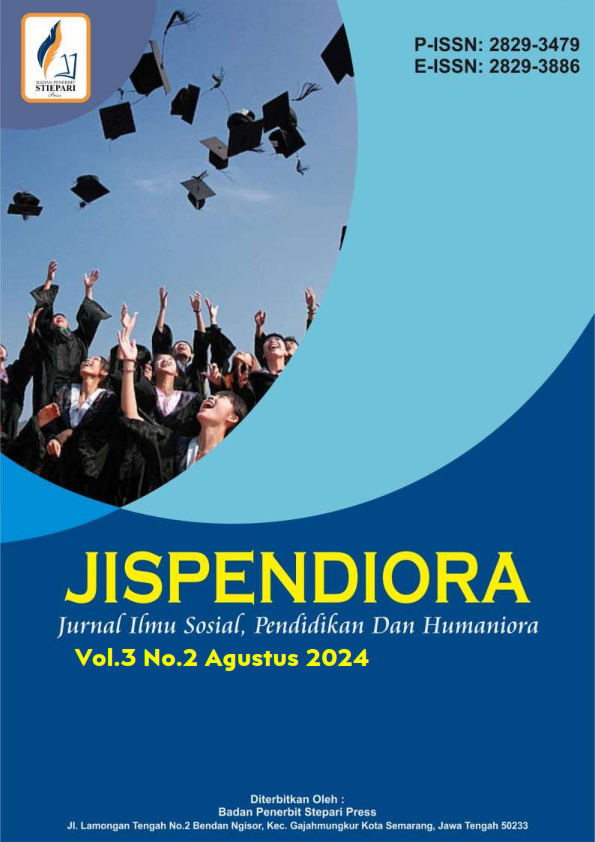Diagnosis Keterampilan Penggunaan Teknologi dalam Belajar Siswa di SMP N 19 Palembang
DOI:
https://doi.org/10.56910/jispendiora.v4i1.2121Keywords:
Education, TAM, TechnologyAbstract
Technology has brought about significant changes in the educational landscape, particularly in the way students access and analyze data. Determining how well seventh grade students at SMP Negeri 19 Palembang use technology as a learning aid was the aim of this study. Students were given questionnaires to complete and observations were made using quantitative approaches. 48.42% of pupils had strong technology use skills, according to the data, while none of the kids fell into the low category. Despite the fact that the majority of students are used to using digital devices and online learning platforms, these findings show that they still need to enhance their digital literacy in order to use technology more responsibly and efficiently. This study demonstrates how crucial the school environment, instructors, and counselors are in offering continuous assistance on digital literacy. Furthermore, to improve the efficiency of technology utilization in the educational process, systematic training is required. The technology acceptance model (TAM) focuses on how technology might facilitate learning and how easy it is to use in order to understand students' adoption of it.References
Akbar, A., & Noviani, D. N. (2019). TANTANGAN DAN SOLUSI DALAM PERKEMBANGAN TEKNOLOGI PENDIDIKAN DI INDONESIA.
Ali, A., & Erihadiana, E. (2022). Peningkatan kinerja teknologi pendidikan dan penerapannya pada pembelajaran Pendidikan Agama Islam. Jurnal Dirosah Islamiyah, 3(3), 332-341.
Andjani, T. R. (2018). “Definisi Dan Kawasan Teknologi Pembelajaran.”
Hasan & Iqbal. (2004). Analisa Data Penelitian dengan Statistik. Jakarta : PT Bumi Aksara.
Jam'an. (2021). Penerapan Teori Model Penerimaan Teknologi dalam Perilaku Pengguna Teknologi Internet.
Jurnal Pendidikan Dan Konseling (JPDK), 4(6), 7911-7915.
Miasari, R. S., Indar, C., Purwoto, P., Salsabila, U. H., Amalia, U., & Romli, S. (2025). Teknologi pendidikan sebagai jembatan reformasi pembelajaran di Indonesia lebih maju. Jurnal Manajemen Pendidikan Al Hadi, 2(1), 53-61.
Nasution, L. M. (2017). Statistik deskriptif. Hikmah, 14(1), 49-55. Nurdyasnyah, N., & Andiek, W. (2015). Inovasi teknologi pembelajaran.
Nugraheny, A. R. (2020). Peran teknologi, guru dan orang tua dalam pembelajaran daring di masa pandemi. Peran Teknologi, Guru Dan Orang Tua Dalam Pembelajaran Daring Di Masa Pandemi, 7.
Pibriana, D. (2020). Technology acceptance model (TAM) untuk menganalisis penerimaan pengguna terhadap penggunaan aplikasi belanja online XYZ. JATISI (Jurnal Teknik Informatika Dan Sistem Informasi), 7(3), 580-592.
Pristiwanti, D., Badariah, B., Hidayat, S., & Dewi, R. S. (2022). Pengertian pendidikan.
Putri, ND, Abtasari, SM, Izazi, FC, Nurhidayah, N., Tanjung, RF, & AR, S. (2024). Hubungan antara penggunaan teknologi dalam pembelajaran dengan efikasi diri siswa. Jurnal Penelitian Pendidikan dan Konseling , 1 (1), 44-50.
Sandrasyifa Ully, C., & Nugraheni, N. (2024). TEKNOLOGI BERPERAN PENTING DALAM PENDIDIKAN LANJUTAN KHUSUSNYA DI SEKOLAH DASAR. Jurnal Penelitian Pendidikan Indonesia, 1(3), 133–141.
Sasongko, D. G. S. (2018). Pengertian Pendidikan. Universitas Indraprasta PGRI Jakarta, 2.
Sudiarja, A., dkk. (2006). Karya Lengkap Driyarkara: Esai-Esai Filsafat Pemikir yang terlibat penuh dalam Perjuangan Bangsanya. Jakarta: Gramedia.
Susanti, R. (2013). TEKNOLOGI PENDIDIKAN DAN PERANANNYA DALAM TRANSFORMASI PENDIDIKAN (Vol. 2, Issue 2).
Downloads
Published
How to Cite
Issue
Section
License
Copyright (c) 2025 JISPENDIORA Jurnal Ilmu Sosial Pendidikan Dan Humaniora

This work is licensed under a Creative Commons Attribution-ShareAlike 4.0 International License.








